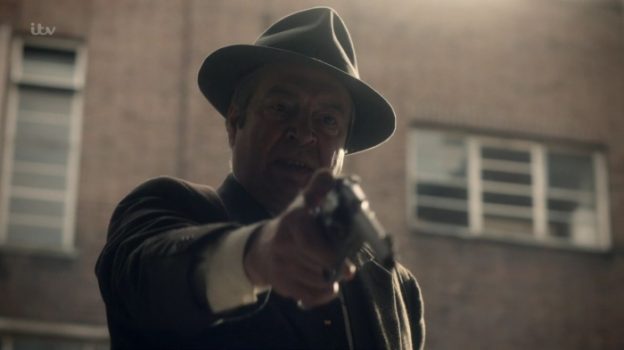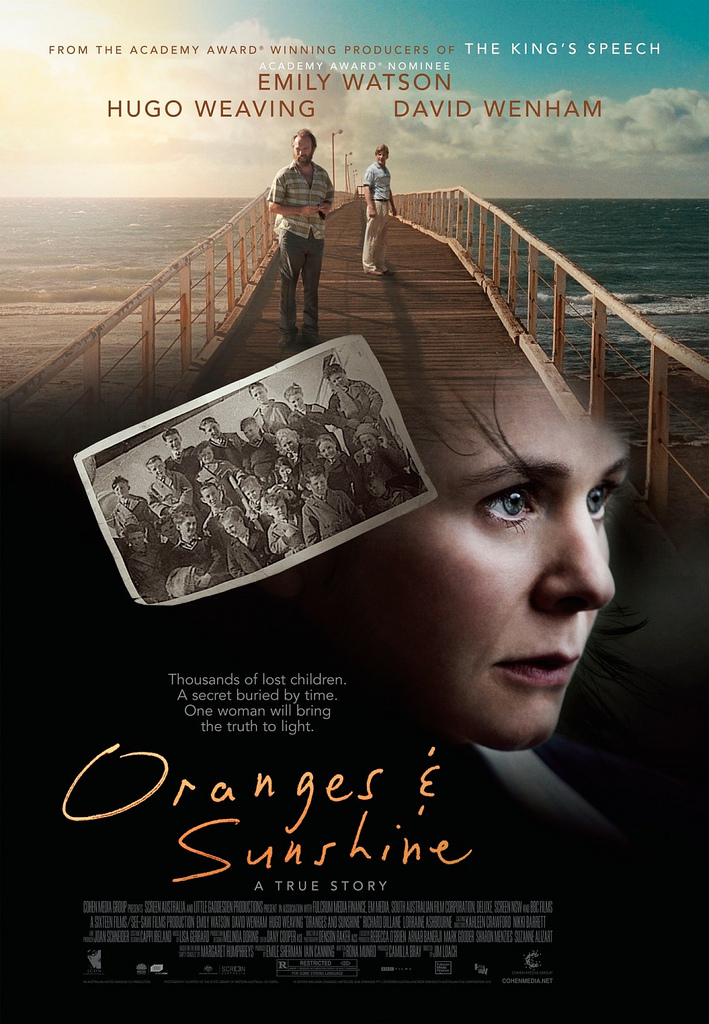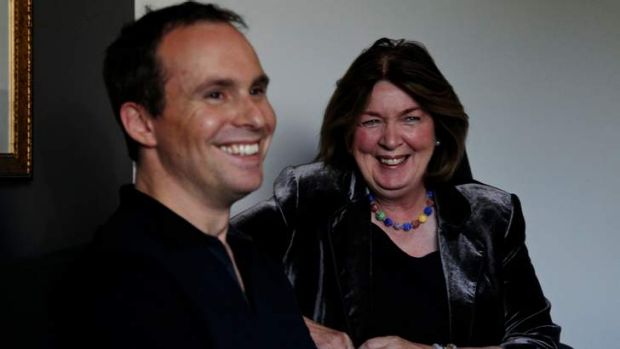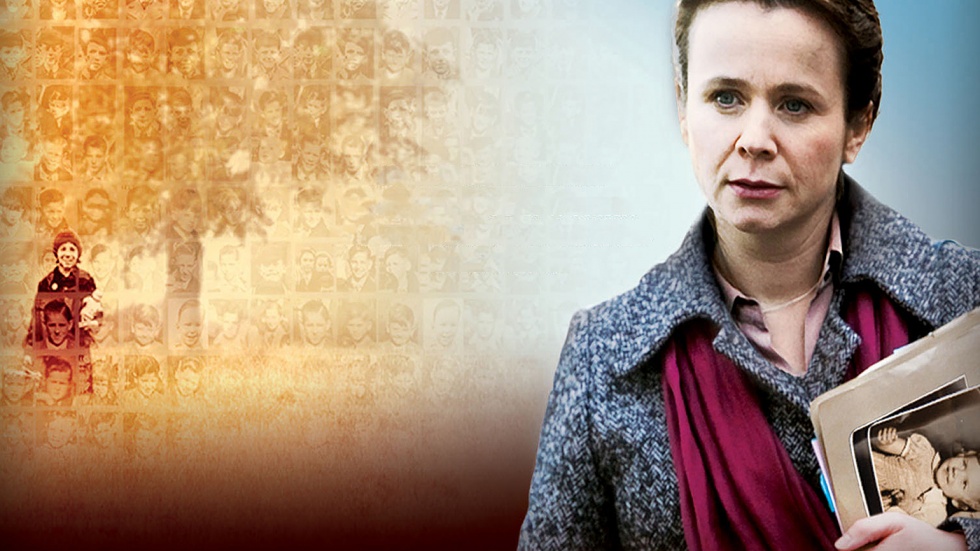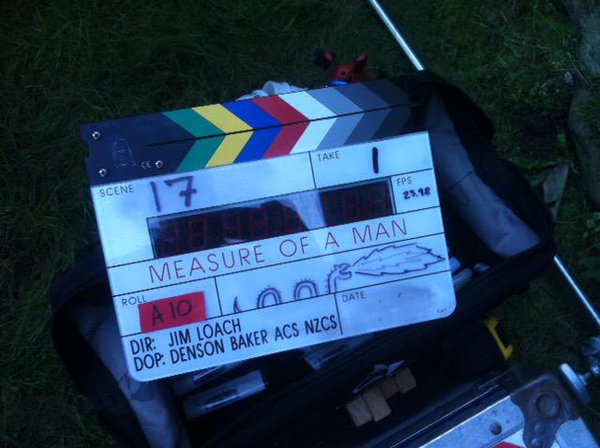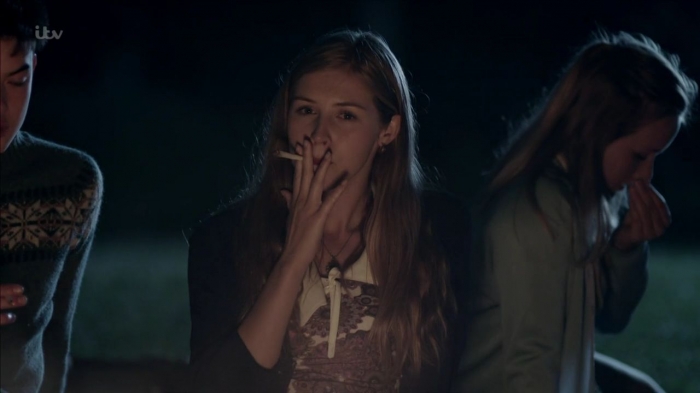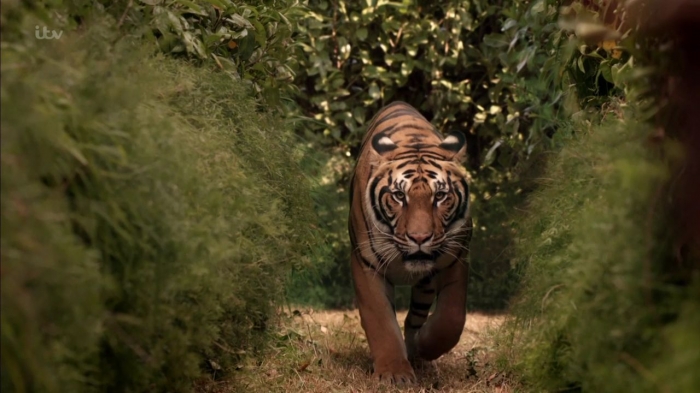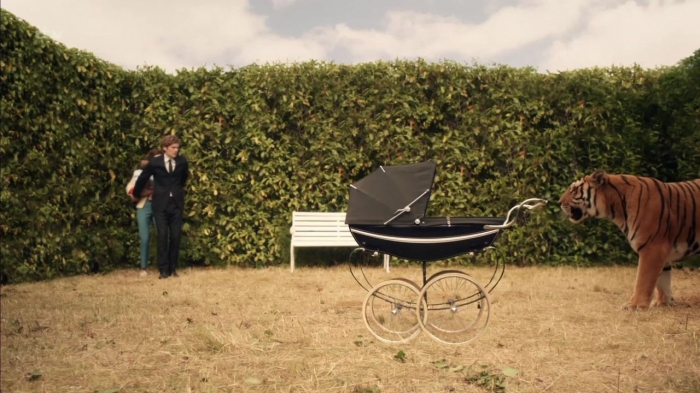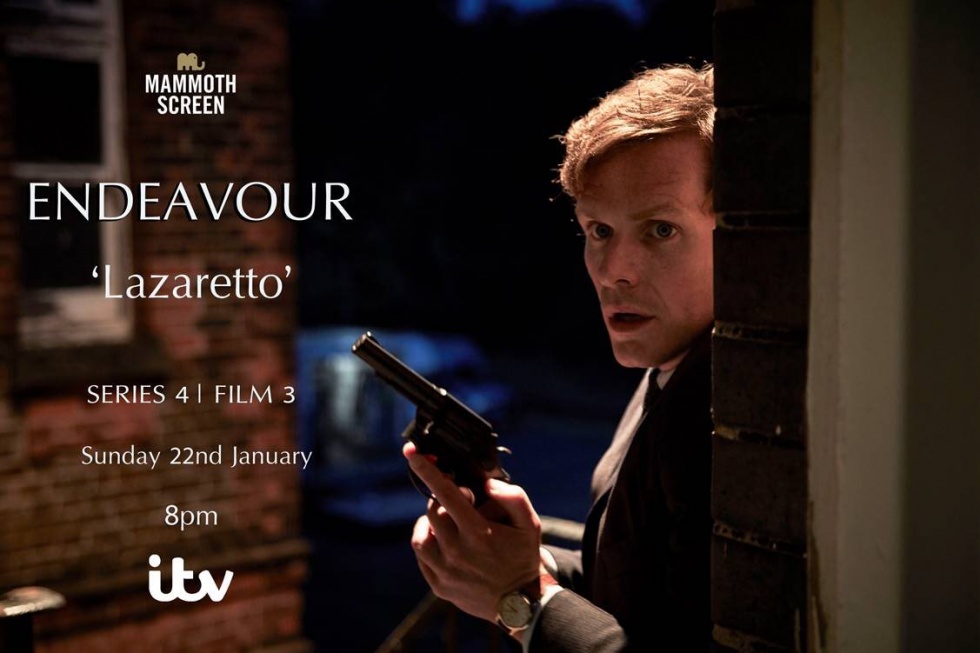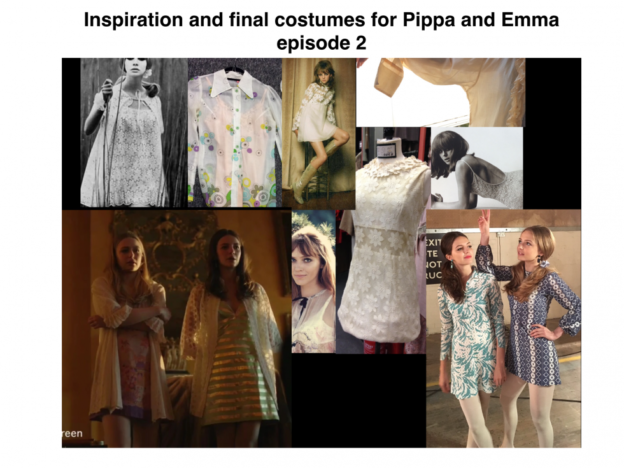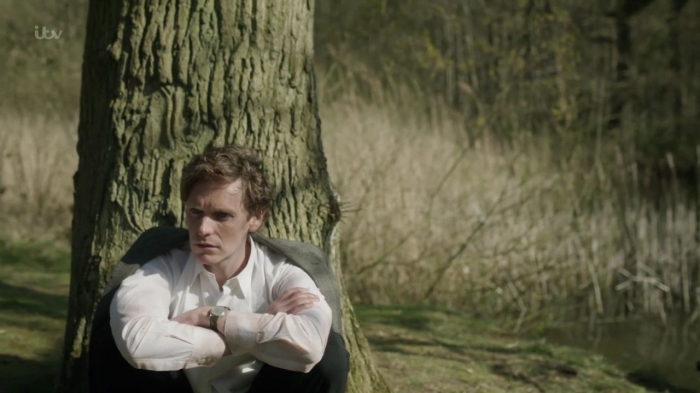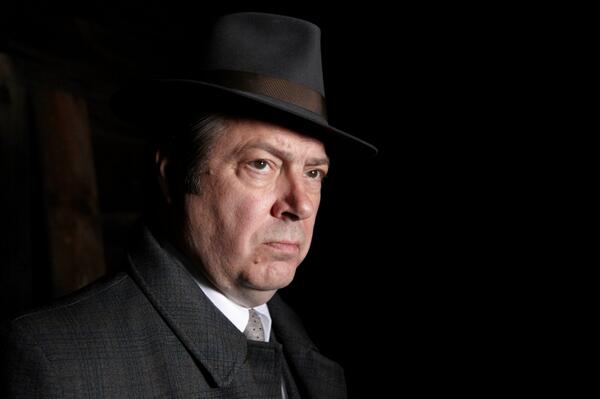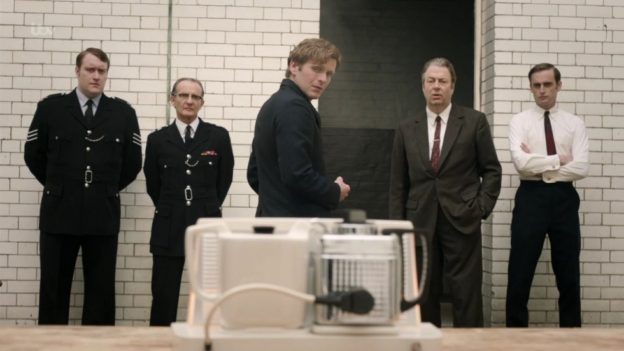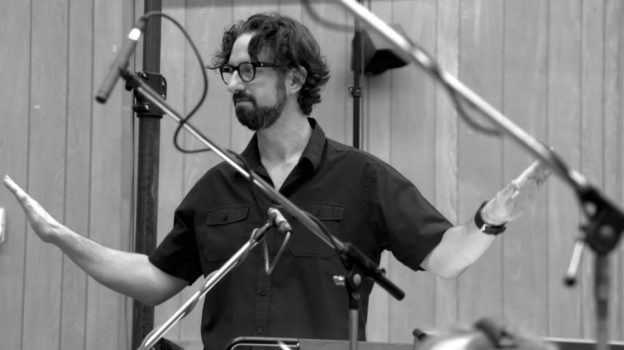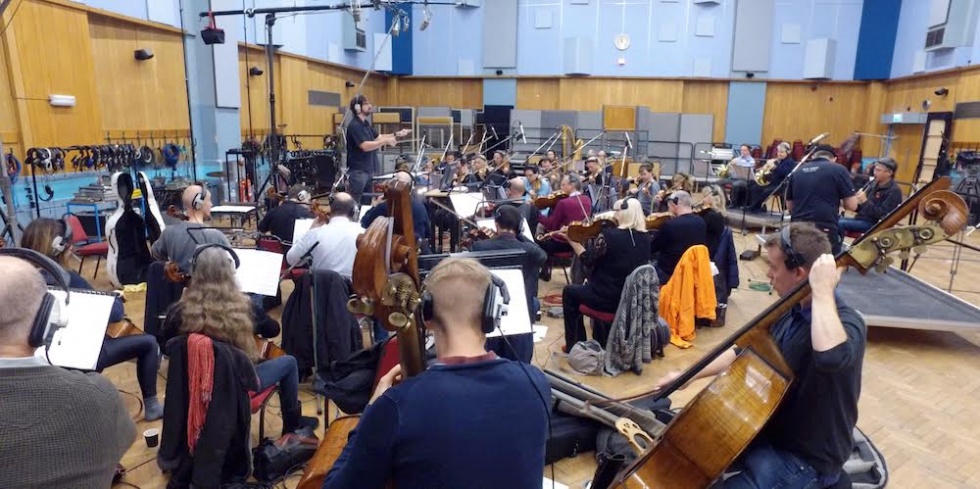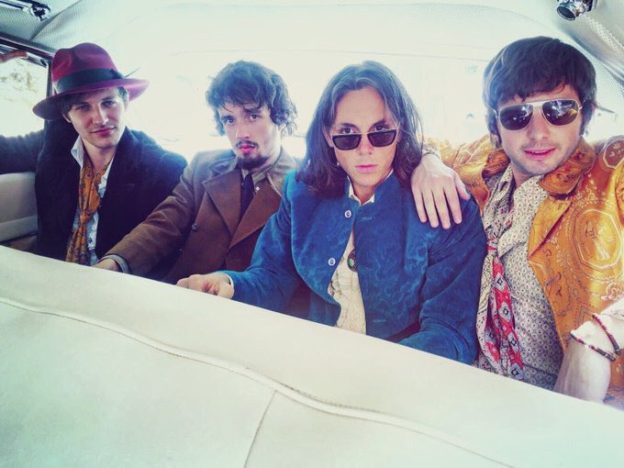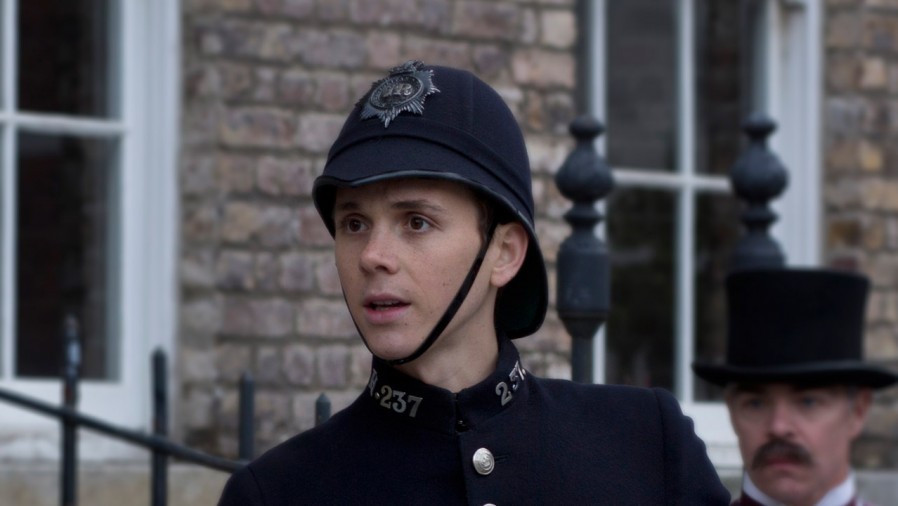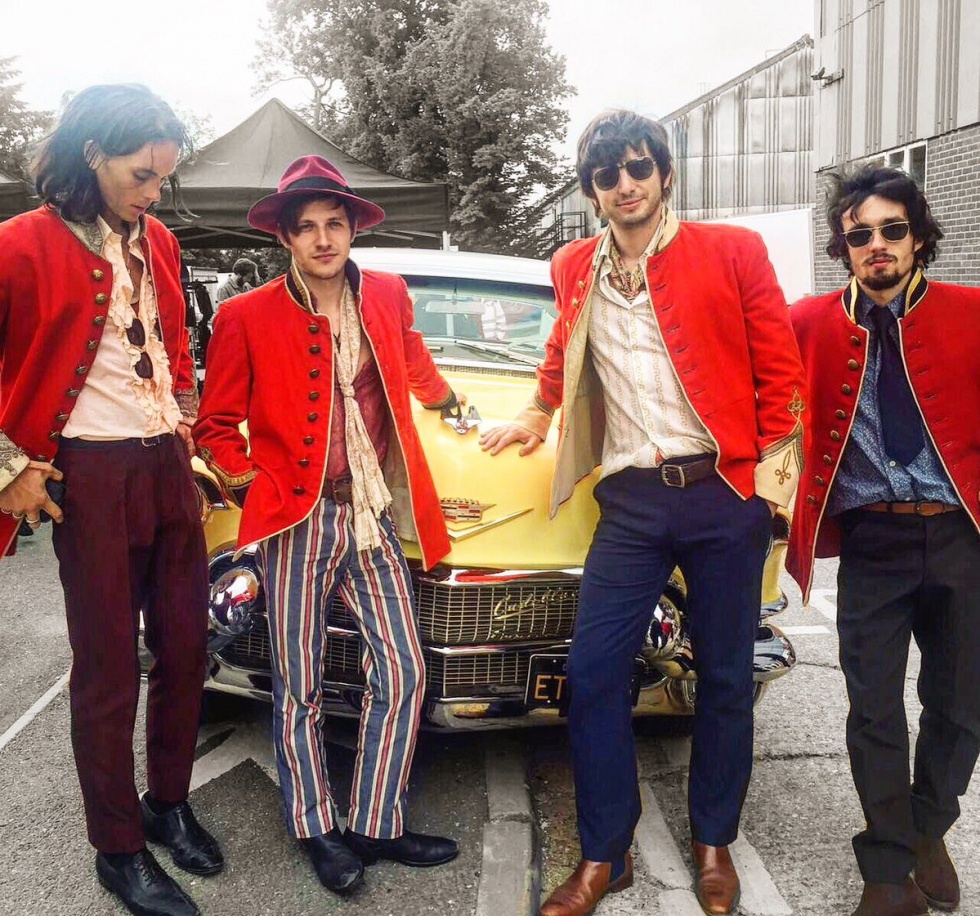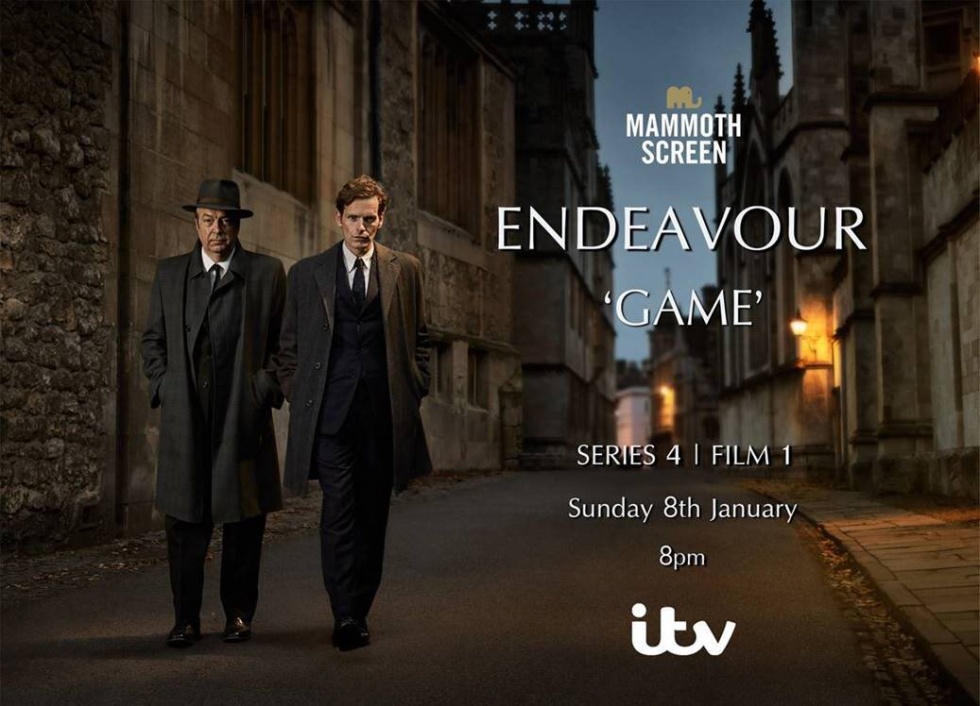THE ENDEAVOUR ARCHIVES: CELEBRATING 30 YEARS OF MORSE ON SCREEN
Interview copyright © Damian Michael Barcroft 2017
“Coughing better tonight” – The Wigan Nightingale
Russell Lewis on CODA
An exclusive ENDEAVOUR interview
by Damian Michael Barcroft
The final part of our journey discussing series three of ENDEAVOUR as well as previewing tonight’s film with writer/executive producer – Russell Lewis.
~
Remembering Graham. My Grandfather, mentor and friend.
~
Wednesday morning at five o’clock as the day begins…
DAMIAN: Morning Russ. Just pass me that note on the fireplace, it’s got the questions on. Thanks. So evil twin, no, we’ve done that. Tiger, yeah that one too. You see, I’m asking all the right questions, but not necessarily in the right order. Here we go then, eyes down for a full house – would you agree that CODA was by far the best film of series three?
RUSS: I honestly couldn’t say.
DAMIAN: Of all the ENDEAVOUR films thus far, which one would you say was the best or at least which are you most proud of?
RUSS: Again – unhelpfully – I don’t have a favourite child. I have good (and less good) memories about each of the films.
DAMIAN: Do you ever get a sense, either in the writing, filming or post production process, which of the films are going to be a hit with audiences?
RUSS: Not particularly. ENDEAVOUR has always been a Variety pack. Someone will love the Ricicles, but not the Sugar Puffs. I view it as a totality.
DAMIAN: When I’ve asked you about specific films in our previous interviews, I often get the impression that you haven’t seen them in a while. Obviously you see the rushes from each day’s shoot, but other than that, do you not watch them again?
RUSS: It’s very personal. We watch not just the dailies, but also the weekly assemblies, and every cut that’s done in post – on which we give notes. And then again in the grade… and during the final mix. So. Once I’ve seen the final cut graded & mixed… I tend not to watch them again. All I ever see are the flaws – the things we could have done better. Battles lost and won.
DAMIAN: Would it not even prove beneficial to watch them again as a refresher before you embark on writing the scripts for new films?
RUSS: It probably would, but the pain to benefit ratio is too far tilted towards to the former as to make it unbearable.
DAMIAN: Will the Lewis family not be gathered in front of the television with a Good News box of chocolates to watch tonight’s film?
RUSS: Unlikely.
DAMIAN: There’s this rather strange phenomenon now where fans tweet along as ENDEAVOUR is actually broadcast instead of focussing on the show and giving it the full and undivided attention it deserves. What do you make of this?
RUSS: If people enjoy it, I don’t see any harm. People talk while watching things. It’s just an extension of that. We are a guest in their homes, and it’s lovely to be invited around to spend time with them. So long as nobody gets hurt, there’s nothing to frighten the horses, and it’s all consensual, then folk can do just as they please in their own lounge rooms.
Either side of the TX +1, it’s a lovely way to interact and connect with people who enjoy the show.
 DAMIAN: As many reading this will know, your scripts are always filled with so many delightful references to INSPECTOR MORSE and various other things –CODA is no exception and newcomers might like to check out GREEKS BEARING GIFTS, PROMISED LAND and THE WAY THROUGH THE WOODS in particular– so you must go back and view the original series every so often?
DAMIAN: As many reading this will know, your scripts are always filled with so many delightful references to INSPECTOR MORSE and various other things –CODA is no exception and newcomers might like to check out GREEKS BEARING GIFTS, PROMISED LAND and THE WAY THROUGH THE WOODS in particular– so you must go back and view the original series every so often?
RUSS: Mmm. A bit, yes. With one exception. It’s usually characters that have stayed in the memory that put in an appearance. But there’s a lot still left to plunder. Yes, PROMISED LAND loomed large over CODA – thanks to the diligence of Helga Dowie, our brilliant Line Producer who has been with us since FIRST BUS TO WOODSTOCK, we managed to shoot the funeral of Harry Rose, which opens proceedings, at the same cemetery. Helga also came through magnificently with last week’s LAZARETTO – going to great lengths to secure the location used in DEAD ON TIME for William Bryce-Morgan’s house.
It’s worth saying that the raid in CODA is not the bank-raid STRANGE and MORSE discuss in PROMISED LAND, which claimed the life of RON PIGGOT. ‘I lost one of my best officers that day, and you lost a good friend.’ We’re looking at the raid before that. Filling in some of the blanks. I did compile a feasible timeline that allowed for both raids and the fallout from each as part of my prep. Taking birth dates from the actors involved. So – Con O’Neill’s character from PROMISED LAND appears here as one of the children at the funeral.
‘They’re all villains. The whole Matthews family.’
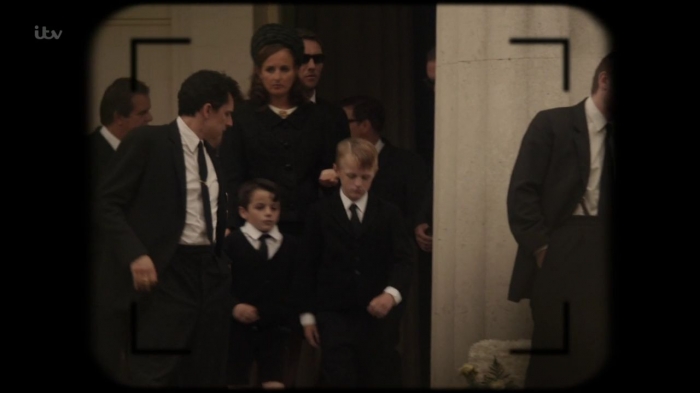 DAMIAN: Did the idea for CODA begin with the bank robbery?
DAMIAN: Did the idea for CODA begin with the bank robbery?
RUSS: It began with the conceit of how we might have Endeavour solve a murder story in the middle of one, yes. Something different. I’m drawn to the proper coppering type stories – and I think the show often works best when the cryptic whodunit is working alongside the more Z Cars/Dixon/Carry on Constable type stories. Each of our heroes playing to their respective strengths.
DAMIAN: There was a few elements, acts and decisions in CODA where I wondered if there might have been some debate or discussion as to whether or not a character would do this or that. Were there many rewrites for this film?
RUSS: There are always MANY, MANY rewrites for EVERY film, with the concomitant amount of debates and discussions. Further, I wouldn’t wish to go. However – because we’re up against it, the last film in every run typically has fewest changes. So…
DAMIAN: Well, I think given everything going on with Thursday, although Endeavour doesn’t approve of him knocking about the informant Bernie Waters, I can just about understand Thursday’s sentiments that the end justifies the means. However, what did surprise me was Bright, after Division made it quite clear that Thursday was to remain suspended from duty, that he later gives him the gun (and indeed evidence from Blenheim Vale no less), basically giving him his blessing to go all Clint Eastwood. Now, it’s a beautiful scene between two men with such loyalty and respect for each other but the Bright we met in GIRL certainly wouldn’t have done this would he?
RUSS: You’re absolutely right, of course. BRIGHT from GIRL would never have done it. I think the return of the revolver was a key moment in BRIGHT finally making his peace with THURSDAY. He goes against Division. It’s Joan’s life on the line. Unleash THURSDAY.
If I remember right, the revolver moment first appeared in an early draft of RIDE – quite early on in the story. But it got the boot, and dropped back in proceedings to the last story.
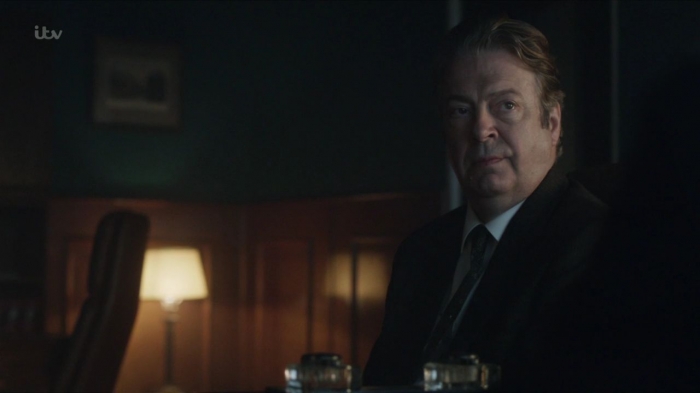
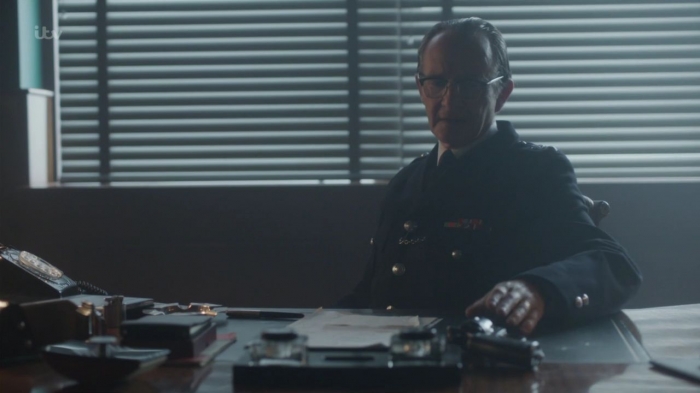
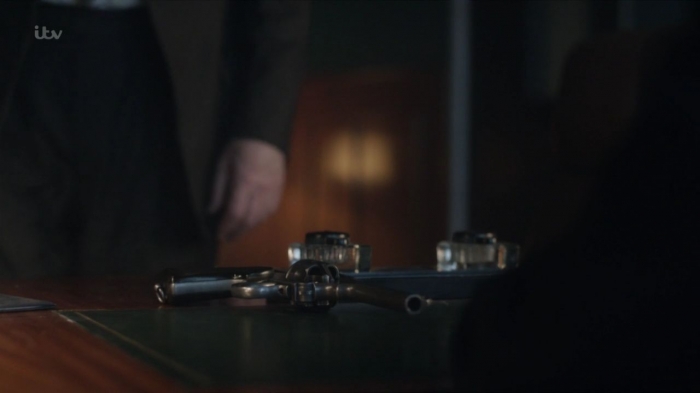 DAMIAN: And the other element which I wondered might have been a subject for debate was Strange also punching Bernie Waters?
DAMIAN: And the other element which I wondered might have been a subject for debate was Strange also punching Bernie Waters?
RUSS: No, that wasn’t ever a sticking point. In some ways, he’s closer to Thursday in his methods. Thursday knocking Hodges about in PREY, and giving Bernie a taste in this story – it kind of gave the green light to Strange to get physical.
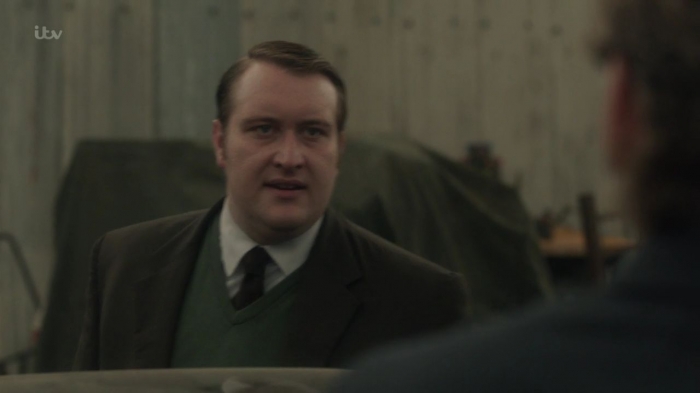 DAMIAN: And, of course, doesn’t the scene serve as a brilliant foreshadowing of the future strained relationship between Endeavour and Strange who is now his superior?
DAMIAN: And, of course, doesn’t the scene serve as a brilliant foreshadowing of the future strained relationship between Endeavour and Strange who is now his superior?
RUSS: Which is why we went the way we did with it. With Thursday and Strange getting heavy handed, it leaves Endeavour, as the one point of reason, isolated. And it puts another boat’s length between Endeavour and Strange – as the latter pulls out in front on the ladder of progress and ambition.
DAMIAN: You must have many discussions, perhaps even heated sometimes, with the directors and actors and I suppose this question is in two parts really. Firstly, tigers aside, you’ve written every episode so far and you’re obviously doing a grand job so why don’t they just trust you to get on with it by now? And, secondly, to look at it from a different perspective, who do you think challenges you to do your very best work?
RUSS: It’s just not how it works. Any piece of work is a constant conversation from first to last. All interested parties provide feedback in the form of Notes – requests for changes. It’s our job to square the circle, and action the majority, if not all, of those changes. If people are bumping their toe on this or that bit of the story – initially a Brains Trust of Damien Timmer, Tom Mullens, Helen Ziegler on Series IV, the script editor, formerly Sam Costin, but on IV, Paul Tester – then it’s worth paying attention and addressing their concerns, because if something’s not working for them, then it’s very likely not going to work for an audience. And then the director will come on board – and they’ll have their take on it. And then it will go out to the Network for their thoughts. And, of course, at various stages – particularly after read-through – Shaun and Roger will give their feedback. Rebecca Keane – Creative Director at Mammoth is a top trouble-shooter and our last line of defence. She’s invaluable at identifying underlying difficulties and offering eleventh hour solutions, and has saved our collective bacon more times than I can remember. ENDEAVOUR is the work of many hands at every stage of development and production.
But the notion of in the beginning was the word, and that the word is in some way inviolate is an utter fantasy. There are always other words. And you will need them all.
It can be tricky on any story you’re telling, but with whodunits – you build a Swiss watch of a plot, and if you’ve done it right, every requested change will have a massive knock-on. A stone echoing down a well. Sometimes it’s more of an avalanche, and you have to go back to the drawing board. A billion things – conflating characters; losing characters; dropping a loop of story. The phrase you’ll hear on any ENDEAVOUR script-meeting is ‘plot vertigo’ – which was minted by Damien. It’s his shorthand for something so fiendishly complex that it just leaves everyone giddy, and going, ‘Huh… Whu?’
At the front end, changes are editorial, but as production rolls, it becomes more practical. Things happen. Events, dear boy. Events. A location falls through, or a prop doesn’t work, an actor goes down, or you don’t quite get what you were hoping for, scenes dropping off the schedule that contains a piece of information vital to driving the plot – a million and one things. And you have to write your way out whatever the problem might happen to be.
But I’m very lucky with the Mammoths – Damien knows which way is up. And, the Network on Series IV was very, VERY trusting and unbelievably supportive. Next to zero in the way of Notes. The thing to remember is not everybody gets their own way. None of us. It’s compromise. Often finding common ground and a third way that provides a solution everyone can feel happy with.
I don’t know if I’ve said this before, but I have two notes up on the wall. The first is ‘Television is a collaborative medium.’ The second is, “Collaborators will be shot.” Now, that’s clearly facetious, but there probably an element of truth in it. I’m sure I drive them absolutely round the twist from time to time. Daily, probably. We all drive each other crazy. But it comes from a good place. Always. In the end it’s all about the work. Everyone cares so deeply about making it as good as it can be.
ENDEAVOUR’s an absolute juggernaut of a machine, and once it’s left the station on its six to nine month journey it’s unstoppable. You have to keep feeding the coal in, and make sure nothing derails it. Television is an expensive business – and stopping production for whatever reason would be the equivalent of catastrophic engine failure. Immensely costly in terms of blood and treasure. And it’s always against the unforgiving minute.
It’s not vital War Work – it’s show-business, but like any job it has its own levels of stress and anxiety. You live on your nerves from first to last.
We all want to do the absolute very best we can with and for ENDEAVOUR. And that kind of comes back to the first dictum. The great William Goldman again – We’re all at each other’s mercy. So, when the muck and bullets are flying, and the stress levels are in the red zone, it’s important to keep that in mind – and deal with everyone as kindly as you’d wish to be dealt with yourself.
Who challenges me to do my very best work? That’s hard to say. Different people challenge you in different ways, but I don’t need much encouragement to be unforgiving of myself. I can’t stand to repeat something, or even tell the same gag twice. So, I tend to make the creative life as difficult as I can. Throw up roadblocks and obstacles. And now… blindfold. You’re just trying to trick the brain, so it doesn’t automatically reach for the tried and trusted solutions. So the decisions one makes become almost independent. I’m sure that sounds unhinged. But ideally – such is the level of concentration one’s applying to the task at hand that the experience becomes out of body. The choices made are subconscious.
It’s hard to describe, but it’s a kind of right hemisphere/left hemisphere thing – you want any story to surprise and intrigue, but never for its own sake; it also, primarily, has to be as emotionally truthful as you can make it. So you’re operating in a kind of no-man’s-land between the two opposing demands – attaining an equilibrium — and slipping from one into another.
I don’t recommend it as a technique for a moment, it’s more a case of needs must when the devil drives, but some of the pieces I’ve thought have worked best over the years – not just on ENDEAVOUR, but across the board — have come out of a long writing session. Forty-eight, seventy-two hours. Unbroken. No sleep until you write ROLL END CREDITS. Somewhere in there you reach an altered state without the aid of chemicals. The barriers break down, and the other guy comes out to play. The dark passenger. I find I can access some places – emotionally, and, er… in terms of memory, that I might not get to otherwise. Your brain is overclocked. And it’s just developing the facility to exploit that access to waking dreaming. A kind of guided hallucination.
I’m also available for Children’s Parties.
I don’t know – any piece of writing always feels like it’s Russian roulette. Is this going to be the one where a full cylinder comes level with the hammer?
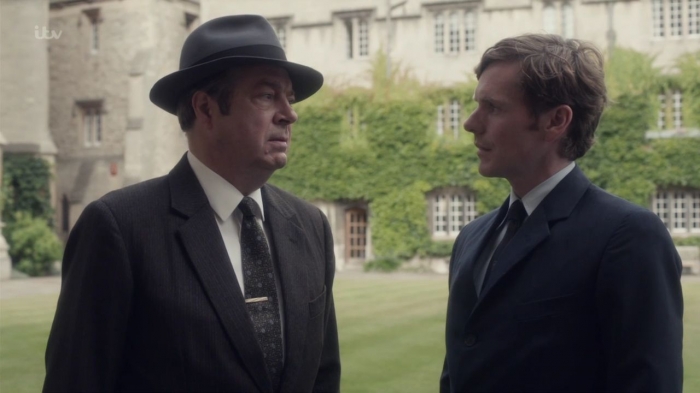 DAMIAN: Aside from the absolutely cracking story and plot for CODA, what impressed me most, as always really, was the beautiful tender moments between characters such as the dialogue when Dorothea tries to comfort Mrs.Thursday during the armed robbery, the exchange between Thursday and Trewlove when he gives her the cigarette and Strange stopping Max from wading into the bank. All fabulous but as is often the case with the relationship between Endeavour and Thursday, it’s what left unsaid that really resonates. Like the scene towards the end (“There was a bullet left in the chamber, whatever you told Cole Matthews, you knew it. You drew his fire”) it’s the silence after this, the two seem to communicate best in theses pauses and they are masters of an almost Pinteresque understatement in conveying their respect and quite possibly love for each other. By the end of the final ENDEAVOUR, will they ever develop the ability to articulate this devotion and bond that they share?
DAMIAN: Aside from the absolutely cracking story and plot for CODA, what impressed me most, as always really, was the beautiful tender moments between characters such as the dialogue when Dorothea tries to comfort Mrs.Thursday during the armed robbery, the exchange between Thursday and Trewlove when he gives her the cigarette and Strange stopping Max from wading into the bank. All fabulous but as is often the case with the relationship between Endeavour and Thursday, it’s what left unsaid that really resonates. Like the scene towards the end (“There was a bullet left in the chamber, whatever you told Cole Matthews, you knew it. You drew his fire”) it’s the silence after this, the two seem to communicate best in theses pauses and they are masters of an almost Pinteresque understatement in conveying their respect and quite possibly love for each other. By the end of the final ENDEAVOUR, will they ever develop the ability to articulate this devotion and bond that they share?
RUSS: Well – that’s very kind of you. Sadly, there was more Dorothea/Win material in that sequence that we lost for time. A bit of a window on Dorothea’s life. It always kills me to lose such things – and my heart bleeds for the actors. I fight for such moments all the way down the line, but all too often one has to bite the bullet.
DAMIAN: And you’ve obviously got a plan for the characters and their story arcs, can we expect to enjoy ENDEAVOUR at least up until the seventies arrive?
RUSS: Well, it’s outside of my gift to say how long ENDEAVOUR will be on screen, but, for the audience’s sake, I hope we can take it to its natural conclusion in terms of story. I know when I think it should end, and what that end will be, but we shall see…
However, before then there’s a few things still left unexamined.
DAMIAN: For the final time then, please tell us about tonight’s film?
RUSS: Hmm. Well… Hymns Ancient & Modern. Endeavour & Thursday investigate a mystery that encompasses distant pre-history and the shape of things to come. Being a story with a pastoral flavour, the audience will need to winnow much chaff to obtain the wheat. It’s the conclusion of our Thirtieth Anniversary run, and I hope our final salute brings the many worlds of Endeavour Morse together in a way that pleases.
At risk of falling foul of the Data Protection Act, I can reveal the contents of an email I got from Shaun Evans who, in his capacity as Associate Producer, dropped by one of the Mixing Days. Children, and those allergic to ‘bad’ language should look away now…
“I’m in the mix. Just seen the opening. This is F*****G BRILLIANT!!!!!!!”
For my own part… The casting cat’s somewhat out of the bag, but I”ll just say this. “And” can be a very special word.
DAMIAN: Will there be a cliffhanger?
RUSS: All I can tell you is that it’s a very different ending for a series of ENDEAVOUR.
DAMIAN: Will there be sandwhiches?
RUSS: Always.
DAMIAN: What about wildlife?
RUSS: Sheep may safely graze.
DAMIAN: So far you have chosen: DRIVEN TO DISTRACTION, GREEKS BEARING GIFTS, THE INFERNAL SERPENT, CHERUBIM & SERAPHIN, DEAD ON TIME and MASONIC MYSTERIES. As we conclude your “Desert Island Dexter”, can you please give us your final two favourite INSPECTOR MORSE episodes?
RUSS: Okay. It’s worth saying that the eight I’ve chosen are in no particular order of merit. But to close… Two very special films, I think. SECOND TIME AROUND – amongst the most affecting of all the Morse stories. I think it’s the human tragedy at the heart of it. The death of a child is always a serious business – but the circumstances of that death in this story just run through every moment so that the thing just aches with a sense of loss and grief. There’s no triumph in Morse’s cracking the case. Only regret. And like ‘It was Mrs.Fallon I knew…’ At this distance, I may be misremembering the exact phraseology, but SECOND TIME AROUND contains the most heart-breaking exchange in the entire canon.
‘She should have been held.’
‘Perhaps she was.’
For some, I’m sure it’s surpassed by ‘Good-bye, sir’.
But – for me – without a shadow of doubt, it’s ‘Perhaps she was.’
Kenneth Colley’s tremendous in it. Monumental. And an early outing from Christopher Ecclestone, and the lovely Pat Heywood – such a fine actress. And dear Oliver Ford-Davies. Yeh – it’s a keeper for me that one. And, I guess, in terms of ENDEAVOUR we are edging towards an event which proves key to the story. Barrington’s score on DEAD ON TIME is terrific too. Amongst his finest.
So – finally, finally… PROMISED LAND. The last of my trio by Julian Mitchell. Again, directed by John Madden. Morse and Lewis transported. Strangers in a strange land. In many ways it’s amongst the least Morse-like films – THE WENCH IS DEAD, notwithstanding – but that’s probably why it works so well. Because it’s a character piece. All the trappings stripped away, not just from Morse himself, but from the established identity of the series. It’s not what most would consider a whodunit – with a range of suspects and clues. It’s a mystery, yes – but I’d argue it’s not a whodunit. It transcends the form. Triumphantly.
Madden said that he wanted the whole thing to build to a kind of High Noon finale – and he realised that brilliantly. So many treasures to enjoy across the film – the Matthews family funeral – that we plundered in CODA. But what’s so great is to see Morse so much on the back foot. That all the unfolding tragedy was down to his error.
In those days, there was no guarantee that series would return year on year, and so – with this final episode of Series 5, there was every possibility it would be the last. I think all of us who watched it at the time properly feared that Morse would not make it out of the final reel. And all of that was conveyed by the very simple device of Morse – for the first time – calling Lewis by his first name.
Then you have that heart-stopping finale – and Con O’Neill delivering so much in next to no screen time. He’s a very fine actor – and I was lucky enough to get to work with him on my last LEWIS. He really deserved all the prizes as Joe Meek. A powerhouse of a performance. And wasn’t Mr.Evans in there somewhere?
But – back to PROMISED LAND, and that finale. Stupendous work. A tragedy painted in heat and dust. And then that final exchange on the steps of the opera house. That eternal unbridgeable gulf between Morse and Lewis. The great man alone, trudging wearily up the stairs in hope of solace from his lifelong comfort. Up with the Morse code, and we’re into the theme… Curtain.
DAMIAN: And if you had to save just one episode of INSPECTOR MORSE from the waves?
RUSS: None of the above. I lay no claim to it being the best, that accolade would very deservedly go elsewhere, but for very personal reasons – THE WAY THROUGH THE WOODS. Writing and making it was a very special experience – working with Gina Cronk, a kind and clever friend, who gave me my first break into drama, and the woman without whom I wouldn’t be doing any of this at all. And Ted Childs, of course, and dear old Chris Burt.
It also marks my first encounter with Damien Timmer – my partner in crime on many occasions, but for the last six years we have been conspiring to kill people, mostly on screen, on ENDEAVOUR. It’s been a very special and creatively rewarding relationship. He’s a dear fellow, madly talented and fearfully bright – and daily faces a workload that would leave lesser mortals six feet under. Seriously. He is inexhaustible, and gives so much of his brilliant creative energy to ENDEAVOUR. I don’t know how he manages it, but all of us are very grateful that he does. Neither ENDEAVOUR nor LEWIS would have come into being without him. We all do what we do, and all of us involved bring the best work we can to the party, but we’re just the Owsla — he is our Chief Rabbit – Damien-rah.
So, a happy memory all round. Weeks of kicking the story around with John Madden over at Shepperton. I think I’ve mentioned before that we got into VERY hot water for going off piste – we couldn’t see a way of delivering the central plank of Colin’s novel, and put together an entirely original story before being jerked off our feet by a strong tug on the choke-chain.
Then, of course, having John and Kevin and Jimmy and Clare saying one’s words.
A golden afternoon spent watching them shoot the final ‘wash-up’ scene over at Leith Hill.
John and Kevin doing their lines about ‘triumph and disaster’, then heading across to the burgundy Jag.
I may have said this before, but it’s perhaps worth repeating. When I think about that afternoon, twenty years ago now, the thing that always comes to mind is the final chapter of ‘The House at Pooh Corner’ – in which Christopher Robin and Pooh come to an enchanted place, and we leave them there.
“So they went off together. But wherever they go, and whatever happens to them on the way, in that enchanted place on the top of the Forest a little boy and his Bear will always be playing.”
And that’s how I always think of Morse and Lewis. That’s where they are for me. Somewhere out there still. Playing, and squabbling, and still fighting for a world worth saving.
DAMIAN: Before we banish you away to the island, I’d just like to thank you for these interviews – I know I’ve been very naughty this year with some of the questions but it is very much appreciated as you know and I’m still your number one fan. Here’s to thirty years of Morse on our screens, to you and all of Team ENDEAVOUR – cheers! Now, drink up Lewis…
RUSS: Well, that’s very kind of you. Much appreciated by all at #TeamEndeavour. Another thirty years of Morse? Who knows? It’s been a privilege to have been a part of it, in one way and another, across all its various incarnations thus far, but I expect 2047 will see me long in Kensal Green. Younger, better, infinitely smarter fingers will be upon the typewriter. And that’s how it should be. But it all began with Colin Dexter. Morse was Colin’s gift to the world. That the legend has been expanded upon and embellished by so many is testament to the strength of Colin’s original creation. There have been many custodians over the years, I’m just the latest. I doubt I’ll be the last. Vitai lampada.
~
And for Tootles…
“Bloody nice shoes”
~
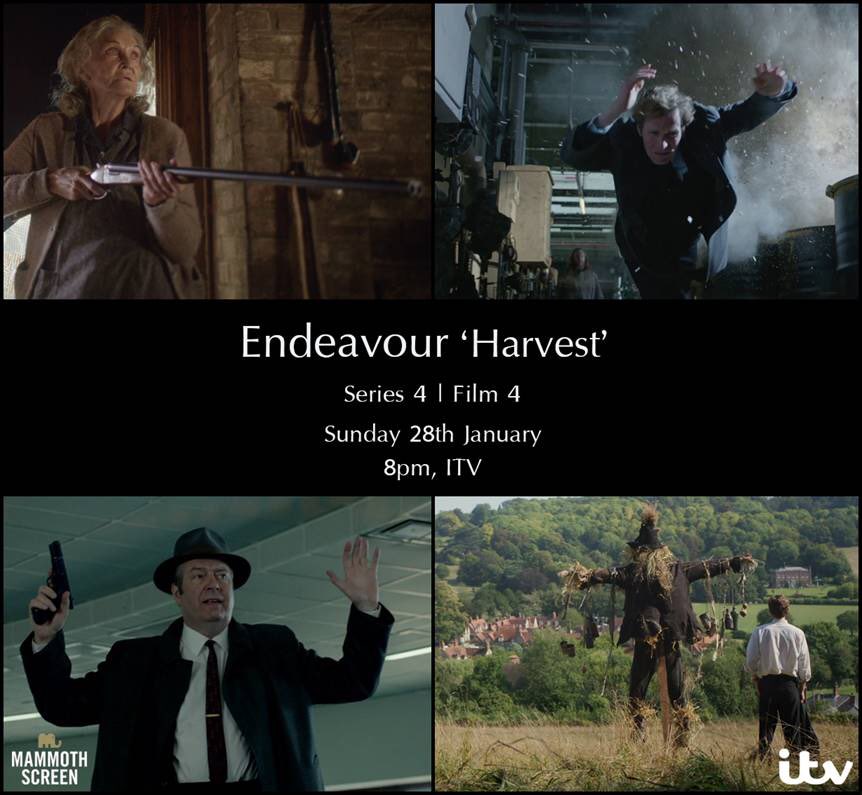 THE ENDEAVOUR ARCHIVES / No.26 / CODA
THE ENDEAVOUR ARCHIVES / No.26 / CODA
Interview copyright © Damian Michael Barcroft 2017
All the interviews and articles on this website are original and exclusive and I would please ask that the copyright be respected. Therefore, please do not use quotes or any other information contained here without permission. Thank you.
~~~
DAMIAN: Put fire on luv, it’s getting coda in here. Coda! Be honest, what do you think of it so far?
TIGER: Rubbish! – get off…
